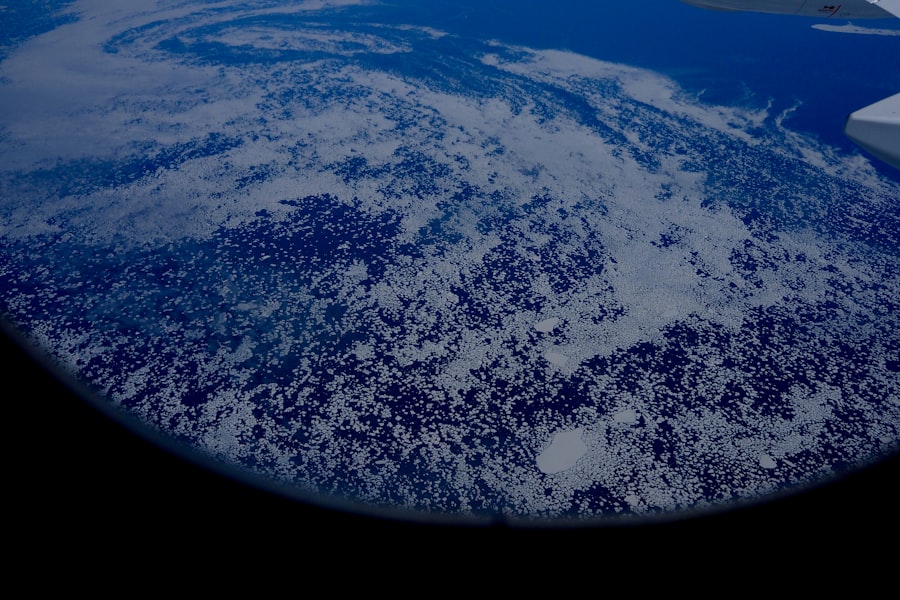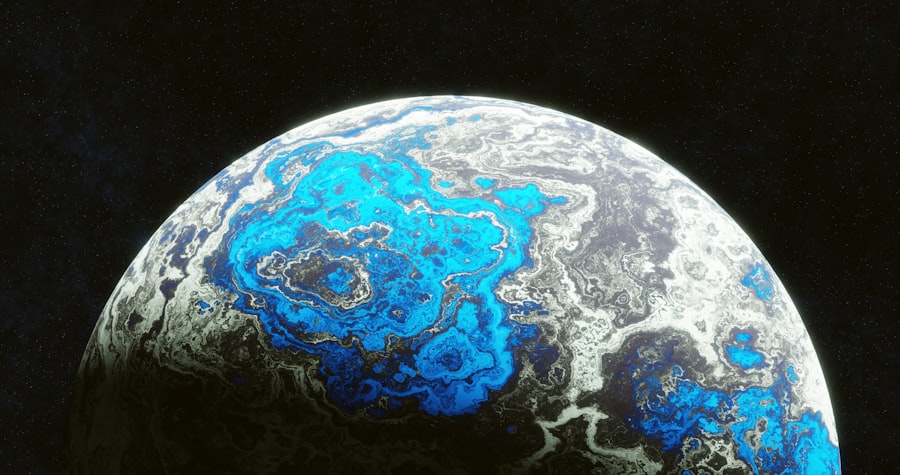The Earth, a dynamic and complex planet, is composed of multiple layers that contribute to its geological and physical characteristics. Understanding the interior of the Earth is crucial for comprehending not only the planet’s formation and evolution but also the processes that govern its surface phenomena. The study of Earth’s interior encompasses a range of scientific disciplines, including geology, geophysics, and seismology.
By delving into the depths beneath the surface, scientists can uncover the secrets of the planet’s past and gain insights into its future. The exploration of Earth’s interior is not merely an academic pursuit; it has profound implications for humanity. Knowledge of the Earth’s layers informs our understanding of natural resources, informs hazard assessments for earthquakes and volcanic eruptions, and aids in predicting climate changes.
As technology advances, researchers are equipped with increasingly sophisticated tools to probe the depths of the Earth, revealing a world that remains largely hidden from direct observation. This article will explore the various layers of the Earth, the methods used to study them, and the implications of these findings for both science and society.
Key Takeaways
- Earth’s interior is composed of the crust, mantle, and core, each with unique properties and characteristics.
- Seismic imaging and tomography are key methods for exploring and understanding the Earth’s interior structure and composition.
- Mapping Earth’s surface features helps visualize the crust and understand its geological processes.
- Convection and plate tectonics play a crucial role in revealing the dynamics of the Earth’s mantle.
- Investigating Earth’s magnetic field provides insights into the composition and behavior of the core.
The Earth’s Layers: Crust, Mantle, and Core
The Earth is structured in three primary layers: the crust, mantle, and core. The crust is the outermost layer, varying in thickness from about 5 kilometers beneath the oceans to approximately 70 kilometers beneath mountain ranges. It is composed of a variety of rocks and minerals, forming the landmasses and ocean floors that humans inhabit.
The crust is relatively thin compared to the other layers, yet it plays a critical role in supporting life and facilitating geological processes. Beneath the crust lies the mantle, which extends to a depth of about 2,900 kilometers. The mantle is composed of semi-solid rock that flows slowly over geological time scales.
This layer is responsible for convection currents that drive plate tectonics, leading to the movement of continents and the formation of mountains and ocean basins. The core, located at the center of the Earth, is divided into two parts: a solid inner core and a liquid outer core. The outer core is primarily composed of iron and nickel and is responsible for generating Earth’s magnetic field through its dynamic movements.
Methods of Exploration: Seismic Imaging and Tomography

To explore the Earth’s interior, scientists employ various methods, with seismic imaging and tomography being among the most effective. Seismic imaging involves analyzing waves generated by earthquakes or artificial sources as they travel through the Earth. By studying how these waves change speed and direction when they encounter different materials, researchers can infer the composition and structure of the Earth’s layers.
This technique has provided invaluable insights into the properties of the crust and mantle. Tomography takes seismic imaging a step further by creating three-dimensional models of the Earth’s interior. Similar to a CT scan used in medicine, seismic tomography uses data from numerous seismic stations around the world to construct detailed images of subsurface structures.
This method has revealed complex features such as subduction zones, where one tectonic plate sinks beneath another, and mantle plumes that may lead to volcanic activity. Together, these techniques have revolutionized our understanding of Earth’s internal dynamics.
Visualizing the Crust: Mapping Earth’s Surface Features
| Surface Feature | Description | Example |
|---|---|---|
| Mountains | Elevated landforms with steep slopes and peaks | Mount Everest |
| Valleys | Low-lying areas between mountains or hills | Grand Canyon |
| Plateaus | Flat, elevated landforms with steep sides | Colorado Plateau |
| Plains | Large, flat areas with minimal elevation changes | Great Plains |
| Deserts | Dry, arid regions with minimal vegetation | Sahara Desert |
Mapping Earth’s surface features is essential for understanding how geological processes shape landscapes over time. Geologists utilize various tools, including satellite imagery and aerial photography, to create detailed maps that reveal topographical variations such as mountains, valleys, rivers, and plains. These maps serve as a foundation for further exploration into subsurface structures and processes.
In addition to traditional mapping techniques, advancements in technology have led to the development of Geographic Information Systems (GIS), which allow for sophisticated analysis and visualization of spatial data. GIS enables scientists to overlay various datasets, such as geological formations, mineral deposits, and fault lines, providing a comprehensive view of how surface features relate to underlying geological processes.
Revealing the Mantle: Understanding Convection and Plate Tectonics
The mantle plays a pivotal role in shaping Earth’s surface through convection currents that drive plate tectonics. These currents are caused by heat generated from the decay of radioactive elements within the Earth, creating a cycle where hot material rises toward the crust while cooler material sinks back down. This movement not only influences volcanic activity but also contributes to the gradual shifting of continents.
Plate tectonics is a fundamental concept in geology that explains how large sections of Earth’s crust move relative to one another. The interactions between these tectonic plates can lead to various geological phenomena, including earthquakes, mountain building, and ocean trench formation. Understanding mantle convection is crucial for predicting these events and assessing their potential impact on human populations living in vulnerable areas.
Probing the Core: Investigating Earth’s Magnetic Field

The Earth’s core is not only significant for its composition but also for its role in generating the planet’s magnetic field. The movement of molten iron in the outer core creates electric currents that produce magnetic fields. This geomagnetic field protects life on Earth from harmful solar radiation and cosmic rays by deflecting charged particles away from the planet’s surface.
Investigating the core presents unique challenges due to its inaccessibility; however, scientists have developed innovative methods to study its properties indirectly. For instance, researchers analyze seismic waves that pass through the core to infer its composition and behavior. Additionally, studies of paleomagnetism—where ancient rocks retain magnetic signatures—provide insights into how Earth’s magnetic field has changed over geological time scales.
Earth’s Interior in 3D: Creating Models and Simulations
The advent of computer technology has revolutionized how scientists visualize and model Earth’s interior. Three-dimensional models allow researchers to simulate various geological processes and visualize complex interactions between different layers. These models can incorporate data from seismic studies, mineral compositions, and temperature distributions to create realistic representations of Earth’s internal dynamics.
Such simulations are invaluable for understanding phenomena like mantle convection and plate tectonics. By manipulating variables within these models, scientists can predict how changes in one part of the Earth may affect other regions. This capability enhances our understanding of natural disasters such as earthquakes and volcanic eruptions, ultimately aiding in risk assessment and mitigation strategies.
Exploring the Deep Earth: Deep-sea Submersibles and Remote Sensing
While much of Earth’s interior remains hidden beneath layers of rock and sediment, exploration efforts have extended into deep-sea environments as well. Deep-sea submersibles allow scientists to investigate hydrothermal vents and oceanic ridges where tectonic activity occurs beneath the waves. These explorations provide insights into how geological processes operate in extreme conditions.
Remote sensing technologies have also advanced our understanding of deep Earth processes by allowing scientists to gather data from inaccessible regions without direct contact. Satellite-based measurements can detect subtle changes in gravitational fields or surface deformation caused by tectonic activity. This information contributes to a more comprehensive understanding of how deep Earth processes influence surface phenomena.
Unraveling Earth’s History: Studying Rocks and Fossils
Studying rocks and fossils provides a window into Earth’s history, revealing information about past environments, climate changes, and biological evolution. Geologists analyze rock strata to understand how sedimentary processes have shaped landscapes over millions of years. Fossils found within these layers offer clues about ancient life forms and their interactions with changing ecosystems.
By examining rock formations and fossil records, scientists can reconstruct past climates and identify periods of significant geological change. This historical perspective is essential for understanding current environmental challenges and predicting future trends related to climate change and biodiversity loss.
Implications for Understanding Natural Disasters: Earthquakes and Volcanoes
The exploration of Earth’s interior has profound implications for understanding natural disasters such as earthquakes and volcanoes. By studying seismic activity and tectonic movements, scientists can identify areas at risk for seismic events and develop early warning systems to mitigate potential damage. Understanding volcanic systems also aids in predicting eruptions and assessing their potential impact on surrounding communities.
Moreover, research into Earth’s internal processes informs disaster preparedness strategies by providing insights into how geological hazards may evolve over time. As urbanization continues to expand into vulnerable areas, this knowledge becomes increasingly critical for safeguarding lives and infrastructure.
The Future of Earth’s Interior Exploration: New Technologies and Discoveries
As technology continues to advance at an unprecedented pace, the future of Earth’s interior exploration holds great promise for new discoveries. Innovations in imaging techniques, computational modeling, and remote sensing are expected to enhance our understanding of complex geological processes further. For instance, machine learning algorithms may be employed to analyze vast datasets generated by seismic studies more efficiently.
Additionally, international collaborations among scientists will likely play a crucial role in advancing research efforts. By sharing data and resources across borders, researchers can tackle global challenges related to natural disasters, resource management, and climate change more effectively. In conclusion, exploring Earth’s interior is an ongoing journey that reveals not only the planet’s structure but also its dynamic processes that shape life on its surface.
As scientists continue to push boundaries through innovative methods and technologies, humanity stands to gain invaluable insights into both our planet’s past and its future trajectory.
For those interested in delving deeper into the fascinating topic of visualizing the Earth’s interior, a related article can be found on Freaky Science’s website. This article provides insights into the various scientific techniques and technologies used to explore and understand the complex layers beneath the Earth’s surface. To explore this further, you can visit the article by clicking on this
